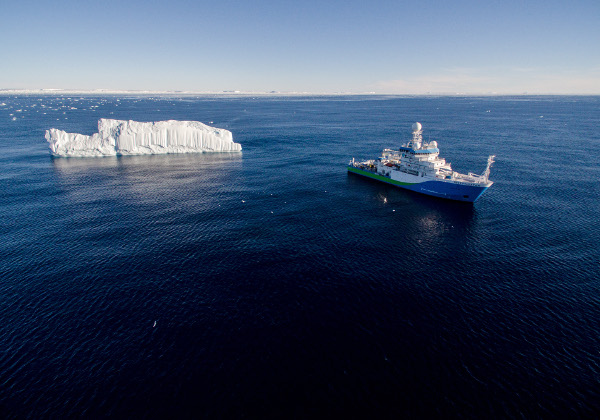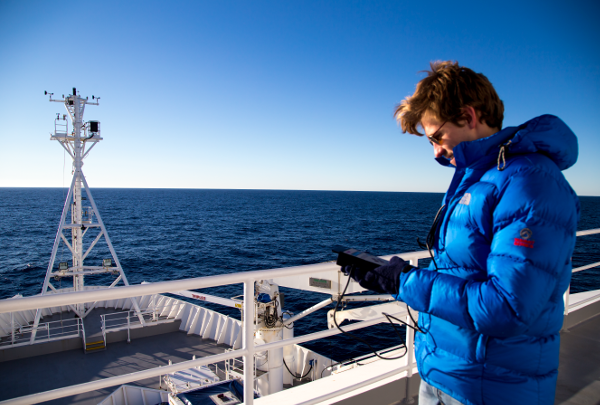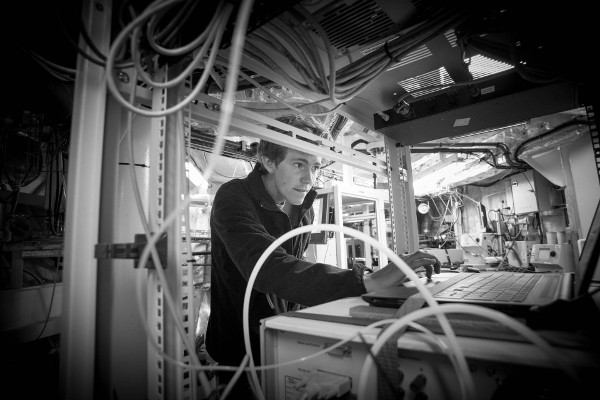
New Antarctic research on board Marine National Facility research vessel Investigator is looking to answer one of the largest uncertainties in the climate system.
Microscopic airborne particles called aerosols play an essential role in the climate system by scattering and absorbing incoming sunlight. They are also the key ingredient for cloud formation, and their properties determine how clouds reflect incoming heat from the sun and, to a lesser extent, trap heat trying to escape the earth’s surface.
CSIRO Oceans and Atmosphere scientist, Dr Ruhi Humphries, says aerosols were thought to have counteracted about half of the net greenhouse warming.
“Although we're putting warming greenhouse gases into the atmosphere, our emissions contain aerosols which are reflecting incoming sunlight and having a net cooling effect on the planet,” says Humphries.
“Aerosols last weeks to months in the atmosphere, whereas some greenhouse gases can last almost 100 years, so it’s possible that as fossil fuel production decreases, the cooling effect of human-made aerosols will also reduce and the warming that has been previously masked will be revealed.”
The research hopes to help address global uncertainty around aerosol and cloud interaction, with the Fifth Assessment Report of the Intergovernmental Panel on Climate Change stating: “…clouds and aerosols contribute the largest uncertainty to estimates and interpretations of the Earth’s changing energy budget.”
More than 50 days of data will be collected on Investigator’s Antarctic voyage, in an area of minimal human influence.

“Understanding how aerosols behave in a 'clean' environment, will go a long way to helping us figure out the impact of aerosols from human activity and their role in global warming,” Humphries says.
The new research will complement measurements taken by Dr Humphries on a voyage with the Australian Antarctic Division in 2012 and will be used in other major projects being conducted in the region by NASA and the Swiss Polar Institute.
“In 2012 we saw significantly higher than expected aerosol concentrations which suggests we may have underestimated aerosols in the Antarctic and Southern Ocean region,” says Humphries.
Understanding how clouds and aerosols interact with each other and the environment is a complex question.
“One of the most common types of naturally occurring aerosols is formed from dimethyl sulphide (DMS), a compound produced by marine micro-algae phytoplankton.
“However, as our oceans become more acidic and increase in temperature, this has an impact on phytoplankton survival and therefore the DMS that is released to form these aerosols in the atmosphere.
“We also need to understand how aerosols are transported. One of the most common ways in the Antarctic is through cyclones, which occur frequently in the area. However, the magnitude and frequency of cyclones as our climate continues to change is not certain.
“It’s thought that a small increase in cloud reflection from aerosol activity could counteract warming associated with climate change. At the same time though, changes in cloud lifetimes caused by changes in aerosols could result in further warming.”
Investigator is the only research vessel that routinely conducts atmospheric research in the Southern Ocean, with two dedicated atmospheric laboratories continuously measuring while at sea.
“Before Investigator came along, the atmosphere in the Southern Ocean had only been measured a handful of times,” Humphries says.
“It’s allowed us to significantly increase our knowledge about the atmosphere in this critical part of the world.”

Dr Humphries is leading his study from shore and is supported by University of Wollongong student, Jack Simmons, who is in charge of the instrumentation and data collection while at sea.
The Chief Scientist of Investigator’s voyage is Associate Professor Leanne Armand from Macquarie University, who is seeking to understand the interactions of the Totten Glacier with the Southern Ocean through multiple glacial cycles.
The Marine National Facility is owned and operated by CSIRO for the benefit of the nation.
